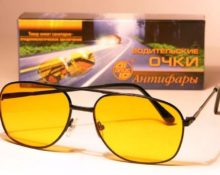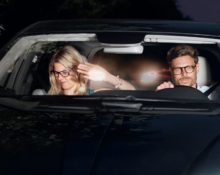Glasses for a driver are not a whim at all, nor some kind of “show-off”. This is a very necessary and important accessory that helps ensure the safety of both the driver and his passengers. Only glasses with polarization, in other words, capable of filtering out reflected light, are called professional driving glasses.
They protect vision from oncoming headlights, eliminate excess ultraviolet radiation, and are simply irreplaceable in any weather.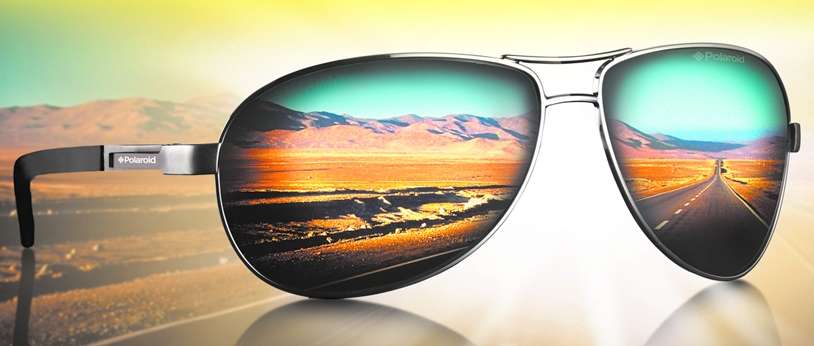
There are several simple rules for selecting driving glasses:
- Driving glasses should preferably have lenses in gray or brown tones. They reduce glare and do not change the perception of color;
- do not take lenses that are too dark, or lenses that are amber or yellow in color;
- to avoid damage in possible accidents, choose polycarbonate lenses;
- try to choose lenses that protect from ultraviolet radiation;
- Use lenses with the correct molding. Otherwise, distorted reflections will cause headaches.
In what cases does a driver need glasses?
Summer days, with their abundance of warmth, bring a lot of joy, but at the same time they cause a lot of trouble and discomfort for drivers. From noon until four o'clock the sun shines especially brightly. During these hours, it is better to drive in the car with safety glasses. In addition, at this time, ultraviolet rays, which are especially harmful, also actively manifest themselves.
In the early morning hours, as well as in the evening, the sun does not manifest itself so negatively. But this does not mean at all that its rays will not cause trouble. Moreover, at this time they are directed directly into the eyes. The light falls on the driver's face with an inclination of 45 degrees and naturally the person begins to instinctively squint, which reduces visibility.
If the driver does not use protective optics, then he can see an obstacle that has arisen on the road only five meters away, and this is sometimes very little for the car to have time to stop when braking.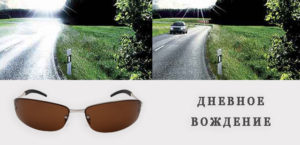
Many vehicle owners purchase special sun visors. But they don't always help out. An example would be ordinary rain, which left puddles on the highway. Light reflected from the surface of the water will create glare. And here the visor will be powerless. Naturally, sunlight is not one of the dangerous factors leading to an accident, but the wet asphalt surface is like a mirror and no visors or tinted stripes can eliminate this negative factor.
Important! No less danger comes from the windows of cars driving in the opposite direction. When light hits them, it is usually reflected directly into the driver’s eyes.
A driver may be unable to see properly for a period of time after driving through an unlit tunnel or leaving a parking lot with little lighting.In this situation, it is recommended to pull over to the side of the road and wait until your vision returns to normal.
It is worth saying that driving glasses must have a coating against ultraviolet rays, which are harmful to the eyes. This radiation causes burns to the retina of the eye, which can lead to serious vision problems.
Types of driving glasses
Sun protection
They are most common among drivers. However, they do not protect against glare and, in addition, they have low throughput (no more than 18-43%). There are several colors available for sale:
- Gray color. This shade is very popular and widespread. Equally suitable for both men and women. It does not change the color of sunlight, but only makes it a little dimmer, reducing the brightness and reducing the amount of glare.
- Orange, yellow. Lenses of this color are suitable for driving in foggy conditions. In winter they distort color reproduction.
- Brown, canary color. On cloudy days they improve the quality of vision.
- Ruby, pink color. Such lenses cut off light waves in the blue spectrum, and the eyes do not get tired or overworked in them, even if they are used for a long time.
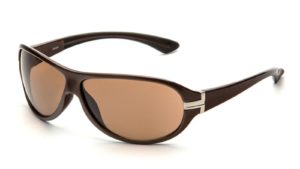
Polarized
Their main advantage is their additional capability. In addition to eliminating glare from the sun, they help protect the eyes from the glare that the sun creates in the eyes and reduce light saturation.
True, they show themselves in all their glory only when there is good lighting. If it is night or twilight outside, they limit visibility, and in bad weather their effectiveness is zero.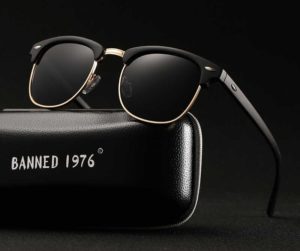
With photochromic coating
If you wear glasses all the time, it would be a good idea to use optics with a photochromic coating.When exposed to sunlight they darken. These glasses are also called “chameleons”. In low light conditions they become lighter. Indoors they cannot be distinguished from classic corrective ones. In the recent past, “chameleons” could not be used in a car, since ultraviolet rays do not penetrate there, but glare from them penetrates freely. But the ophthalmic industry is constantly moving forward and these days they can be used inside a car showroom.
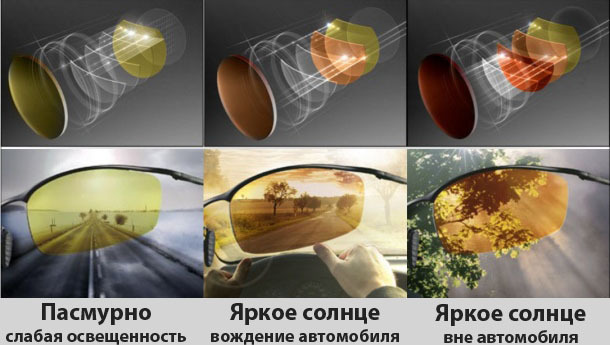
With diopters
This type of glasses is prescribed to car owners with visual impairments. When purchasing them, it will be more productive to opt for lenses that have an anti-reflective coating, which reduces various reflections to zero.
Antilights
In the manufacture of this type of protective devices, plastic, various polymers or glass lenses are used. They perfectly protect from the sun's light and from various types of glare. You will be comfortable with them even in low light conditions. They cost a little more than simple sunscreens. But for those who drive a car most of the time, they will be very useful:
- their main advantage is excellent protection from oncoming headlights;
- they do not harm vision. But this is not true for all glasses that are on sale;
- they have high reflectivity;
- they do not block the passage of light. Even if there is not enough light around, this will not be a hindrance for the driver with them.
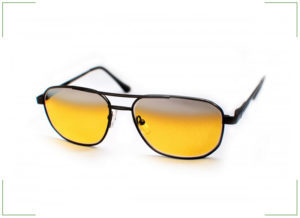
Rules for choosing driving glasses
Polarized plastic
The first step when choosing glasses – this is the material. However, the choice is small and clear. Glass lenses are not suitable for driving a car. It’s better not to worry about accidents, but in any case, during an impact, the glass breaks into many small pieces.Naturally, eye injury cannot be avoided. Plastic lenses, although more expensive, are safer. It is difficult to destroy them into many pieces, which means the risk is reduced to a minimum level. But there is also a minus here. Glass is more durable and does not scratch.
The arms of the optics should be as narrow as possible, this is also true for the frame itself. The greater the thickness, the smaller the field of view becomes. At high speeds, this field is already reduced, and such a design of glasses can cause even more harm.
The main thing you should pay attention to is the lenses. Sunscreen will not help against all the inconveniences. Although they block a lot of excess light, they do not eliminate all glare, reflections and light from oncoming headlights. It is better to take lenses with polarized coating.
They contain a composition that filters out all waves in horizontal directions.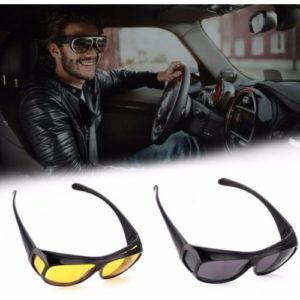
Anti-lights and photochrom
If visibility is poor, a completely different type of optics should be used. Usually on store shelves it has the name “anti headlights" They are red, yellow or orange in color and have a mirror stripe on the bottom.
When using them, the image becomes more contrasty and the colors are clearly distinguished.
Besides, You can often find optics that change the level of glass transparency, depending on external lighting. These are lenses with photochromic coating. But often they are not very useful, and sometimes even do harm, because the time for changing transparency can reach fifteen minutes.


 0
0



